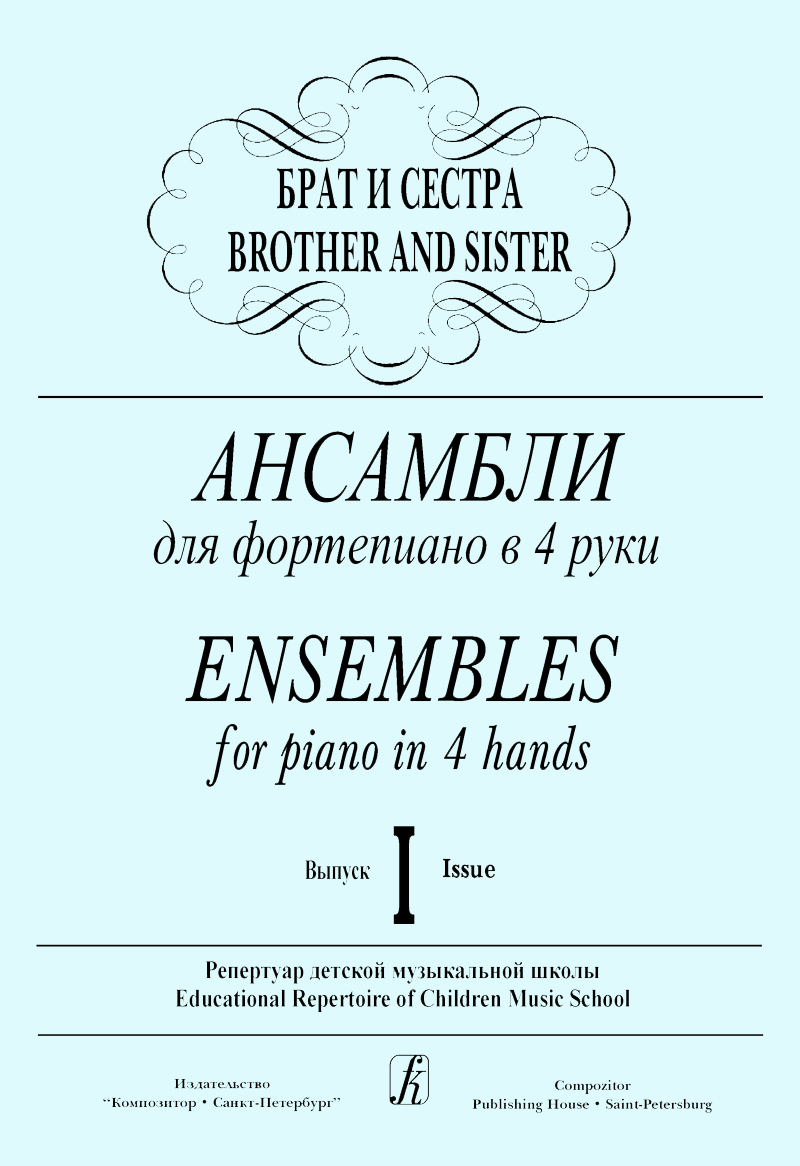
Krishtop L. Comp. Brother and Sister. Vol. 1. Ensembles for piano in 4 hands
- Author:
- Krishtop L. Ed.-comp. by
- Author (full):
- Edited and compiled by Lubov' Krishtop
- Title (full):
- Brother and Sister. Ensembles for piano in 4 hands. Educational repertoire of Children Music School. Volume 1
- Number of pages:
- 76
The middle of the 18th century is truly considered to have been the birth-time of the piano ensemble genre. The four-hands compositions were enough easy to play even for the music lovers. Such genres occurred to be useful for pedagogical aims. The end of the 18th century and the beginning of the 19th century brought the real flourishment to piano ensemble. That time there appeared the orchestra music transcriptions, beside the original four hands compositions. Mutual music-making served both for communicative and educational purposes. People could study symphonies, symphonic poems, operas and other large-scaled compositions. Beside many compositions intended for home music-making and pedagogical work there were created many special pieces for concert stage. Of course, they required skill and wrought interpretation. Numerous compositions for four hands came into being exactly at the end of the 18th century. Those were sonatas by J. Haydn, W. A. Mozart, H. Wolf, J. Hässler, F. Kulau, M. Clementi, A. Diabelli. Later the immense tribute to piaano ensemble was brought by the composers-romanticists F. Schubert, C. M. Weber, J. Hummel, J. Brahms, F. Mendelssohn, R. Schumann, G. Bizet, C. Debussy, M. Ravel, M. Glinka, A. Dargomyzhsky, A. Borodin, A. Rubinstein, S. Rakhmaninov etc.
During the last decade of the 20th century the genre of piano ensemble got its renaissance due to numerous chamber music festivals and contests. One of such competitions is called “Brother and Sister”, being held within the framework of the Children Musical Festival “Children’s Land” in Petersburg. Lots of duets came into being as if from the cornucopia. The Petersburgian composers managed to inundate both pedagogical and concert sphere with piano duets.
Contents:
R. Glier. HYMN TO THE GREAT CITY. From the ballet “Bronze Horseman” (Music text example)
A. Glazunov. GRAND PAS ESPAGNOL. From the ballet “Raymonda”
S. Prokofiev. GAVOTTE. From the “Classical Symphony”
S. Prokofiev. WALTZ “CINDERELLA SETTING OFF TO THE BALL”. From the ballet “Cinderella”
S. Prokofiev. SPRING FAIRY. From the ballet “Cinderella”
S. Prokofiev. BOURRÉE. From the ballet “Cinderella”
D. Shostakovich. SPRING WALTZ. From the ballet suite
S. Banevich. WALTZ “PETERSBURG”. From the ballet of the same name
S. Banevich. SNOW-WHITE AND SCARLET FLOWER
O. Petrova, A. Petrov. WALTZ. From the serial “Petersburgian Mysteries”
V. Sapozhnikov. JOURNEY TO THE HEAVENS. (In carriage along the Nevsky prospect) (Music text example)
- Author
- Krishtop L. Ed.-comp. by
- Author (full)
- Edited and compiled by Lubov' Krishtop
- Title (full)
- Brother and Sister. Ensembles for piano in 4 hands. Educational repertoire of Children Music School. Volume 1
- Number of pages
- 76
